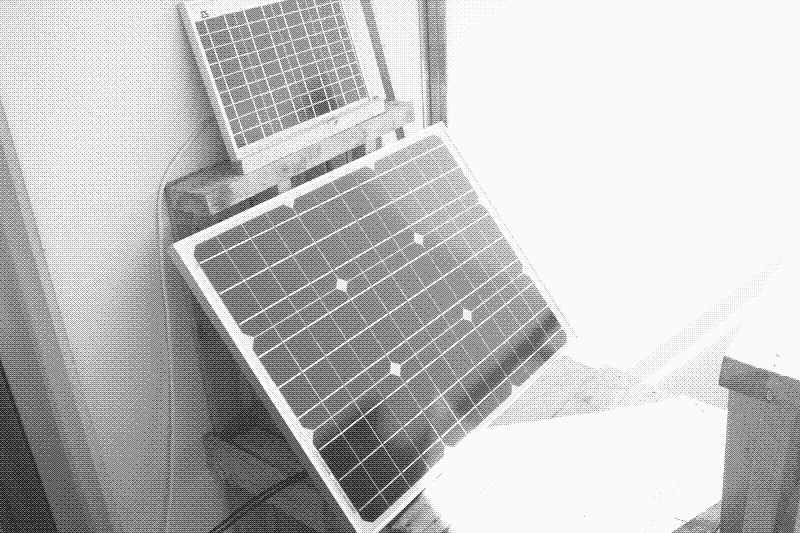Low-tech Magazine has rebuilt its website to be entirely solar powered, and is wilfully designed to go offline when conditions dictate. The new site has a much-reduced energy footprint, and is something of an exemplar in efficient website design in an online landscape where page sizes are bloating to fill our increasing internet bandwidth.
Though the site has its own store of energy, an article on the redesign states unequivocally that the site will go down in extended periods of cloudy weather. "Less than 100-percent reliability is essential for the sustainability of an off-the-grid solar system, because above a certain threshold the fossil fuel energy used for producing and replacing the batteries is higher than the fossil fuel energy saved by the solar panels," the magazine explains.
The site is powered by a solar panel with a peak output of 50 W which sees 4 to 6 hours of direct sunlight on a sunny day. This is connected to a repurposed 12-V lead-acid battery with a capacity of about 40 Wh. The server uses a maximum energy use of 60 Wh per day. On a good day, the system will generate 300 Wh of electrical energy, which is plenty. But on overcast winter days the energy haul could drop to 40 watt-hours a day. Low-tech Magazine thinks this is enough to see the site through only one or two days of bad weather. A second battery may be added if needed.
The magazine is aiming for an uptime of 90 percent which equates to being down for a potential 35 days a year. Though that would be comically low for a vital web service, it's oddly fitting for Low-tech Magazine, which has always been something of an off-beat publication. There aren't many websites that show their current battery charge and the prevailing local weather conditions, after all.
Before this is used as a stick to beat solar power over the head with, consider that the new website isn't connected to the energy grid. While it's true that solar power in any one location will generate less power when the sun isn't shining, the true value of intermittent renewable sources is at the grid scale, where a shortfall in one location can be made up elsewhere, or by using stored energy. In this case, the website is powered by a ring-fenced system.

The new design has reduced the average page size down to a fifth of the old design using a number of techniques. Perhaps the most fundamental of these is that Low-tech Magazine now uses a static website. Unlike many modern websites which generate websites on demand by pulling data from a database, a static site uses the old-fashioned approach of storing documents on a web server.
The magazine has also reduced image sizes by dithering them. Though the images are actually displayed larger than they used to be, they use one tenth of the resources. What were once high-res color images are now black and white, with four shades of gray in between. A color shade is then applied by the browser according to the category of the magazine article.
The site has gone the extra step of using a text-only logo, with clever use of the ← character. It also promises zero third-party tracking, advertising services or even cookies, which is extremely unusual on the modern web. The site has opted to drop Google Adsense in favor of reader donations and print editions. The old site will remain up and running while content is moved across to the solar-powered version.
If you're not familiar with Low-tech Magazine and you're a regular reader of New Atlas, there's every chance their work will be up your street. Have a look at these articles on endless rope drives, the Chinese wheelbarrow and the problems posed by high-speed trains to get a taste. A word of warning, though: at the time of writing it's cloudy in Barcelona, where Low-tech Magazine is based…
Source: Low-tech Magazine






